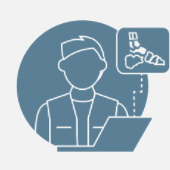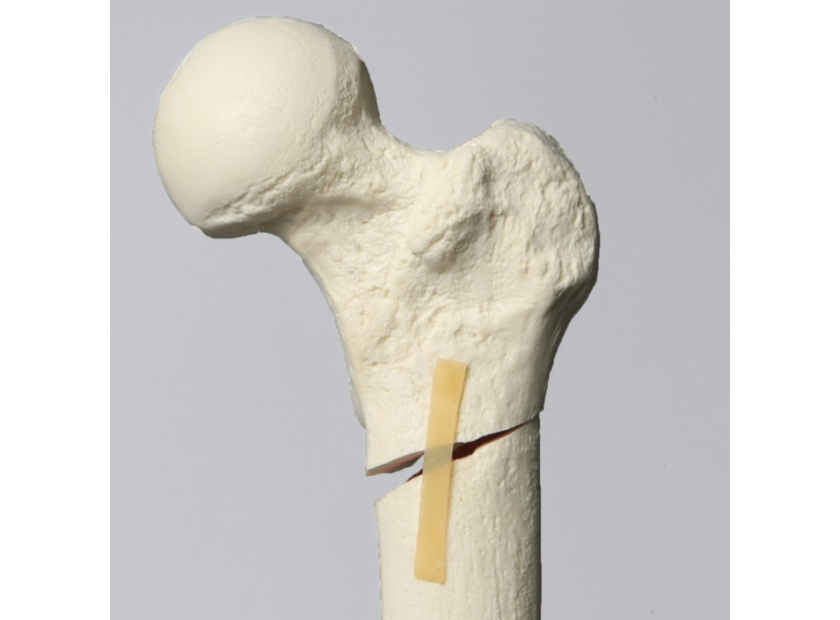Training for Types of Bone Fractures Using Orthopaedic Models
Fractures are among the most common issues medical professionals will face. In some cases, they will need to treat them directly. In others, they will help their patients recover from their long-term effects. Educators need to slant their curriculum to their students' specialties and the common types of bone fractures they will likely see during their careers.
One issue that instructors will run into in training is that many orthopaedic doctors disagree on the standard grading scales for the severity of fractures. In a study of the Gustilo-Anderson classification system, orthopaedic specialists only agreed on the fracture type 60% of the time. This disparity may make it challenging to choose a suitable medical model for training. Using more simplistic grading based on minor, moderate, and severe injuries helps educators target their instruction and choose the right medical education models to guide students.
Training Needs for Types of Bone Fractures
The orthopaedic models needed for training will depend on the severity of the types of bone fractures. While the Gustilo-Anderson classification system is the most commonly used in describing the types of bone fractures, it only accounts for open injuries that are more severe and would likely require the intervention of a surgeon. To better understand bone model training needs, it's best to categorize fractures from three categories based on the type of treatment needed.
Minor |
Moderate |
Severe |
|
Description |
The fracture is likely surface only, and the bones are not displaced. |
The fracture penetrates all the way through the bone and may or may not be displaced. |
The fracture is complex and displaced. The bone may be damaged beyond repair. |
Treatment |
Therapy, activity restrictions, removable splints |
Setting and casting. Minor surgery may be necessary. |
Surgery is required to repair the damage, and permanent hardware may be implanted. |
Examples |
Hairline/stress: A small crack or bruise in a bone Greenstick: A break occurring in younger, newly growing bone. Compression: Compression to the cervical vertebrae, typically from age. |
Transverse: A complete fracture across the bone. Oblique: A curved fracture, often accompanying greenstick or stress injuries. Impacted: A fracture where the ends of each break are driven together. |
Avulsion: A fracture that includes an injury to the tendon. Comminuted: A complex fracture where the bones separate into more than two pieces. Spiral: The fracture goes around the bone, usually as the result of a torsion-type injury. |
When choosing the orthopedic model, the specialty will play a significant role. Someone looking for a chiropractic degree will need the most training in minor injuries where therapy and palliative care are vital. A person who wishes to specialize in surgery would do well with something targeted to the more severe category. There's a wide range of models available for each type.
Features to Look for Depending on Fracture Type
The specific type of fracture training will depend on the specialty. As a result, certain features are better for instruction than others. Some will be entirely unnecessary for specific specialties, while others are essential. Here's a basic breakdown of fracture model features based on the severity of the injury and likely field of medicine.
Minor |
Moderate |
Severe |
|
Realism and accurate kinetic motion are necessary when training students on minor types of injuries. The movement of the model will help them understand how injuries occur and the best restrictions to issue to prevent complications. The lesson may also include instruction on using splints and clamps for examinations and manipulation. Models with these features are best for training on:
|
Radiopaque properties in these medical models will help individuals understand the diagnosis of common issues like compression and transverse fractures. Lower-cost foam models can help train on casting and diagnosis. Meanwhile, higher-quality bone models teach about setting and resolving issues like impacted or displaced fractures. Specialties best served by these models include:
|
Highly realistic surgical training models with replaceable parts that can offer haptic feedback are ideal for this level of instruction. These models should be as detailed as possible and include soft tissue features, especially when students train on avulsion fractures. The models suit a wide range of specialties but are particularly useful for training in:
|
The most straightforward rule of thumb when training medical students on different types of bone fractures is the more complex the fracture, the more complex the model. A student taking a surgical path will need highly accurate models that recreate a lifelike experience. Those in palliative care may get by with more simplistic options. Using this as a guideline, medical educators can provide the best possible model to support a well-rounded education.
Sawbones' models are ideal for training on different types of fractures and their treatment techniques. Contact us at 206-463-5551 to learn more.

Our engineers, cultivated through our partnership with Pacific Research Laboratories, access a wide range of processes and tools to develop medical educational supplies for universities, hospitals, research and development, and more. Our years of experience creating these products allow us to make stock and custom models for all purposes.








